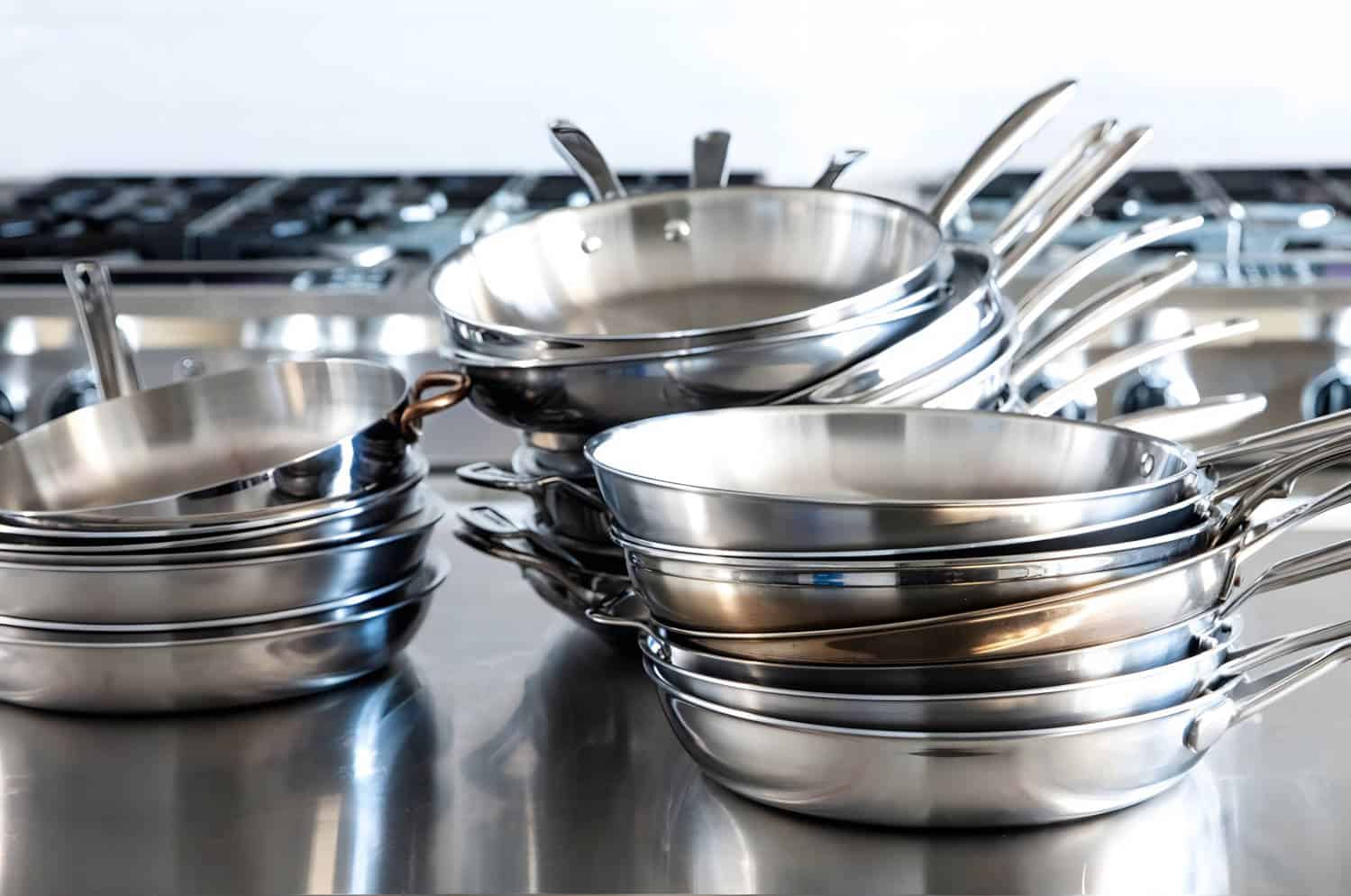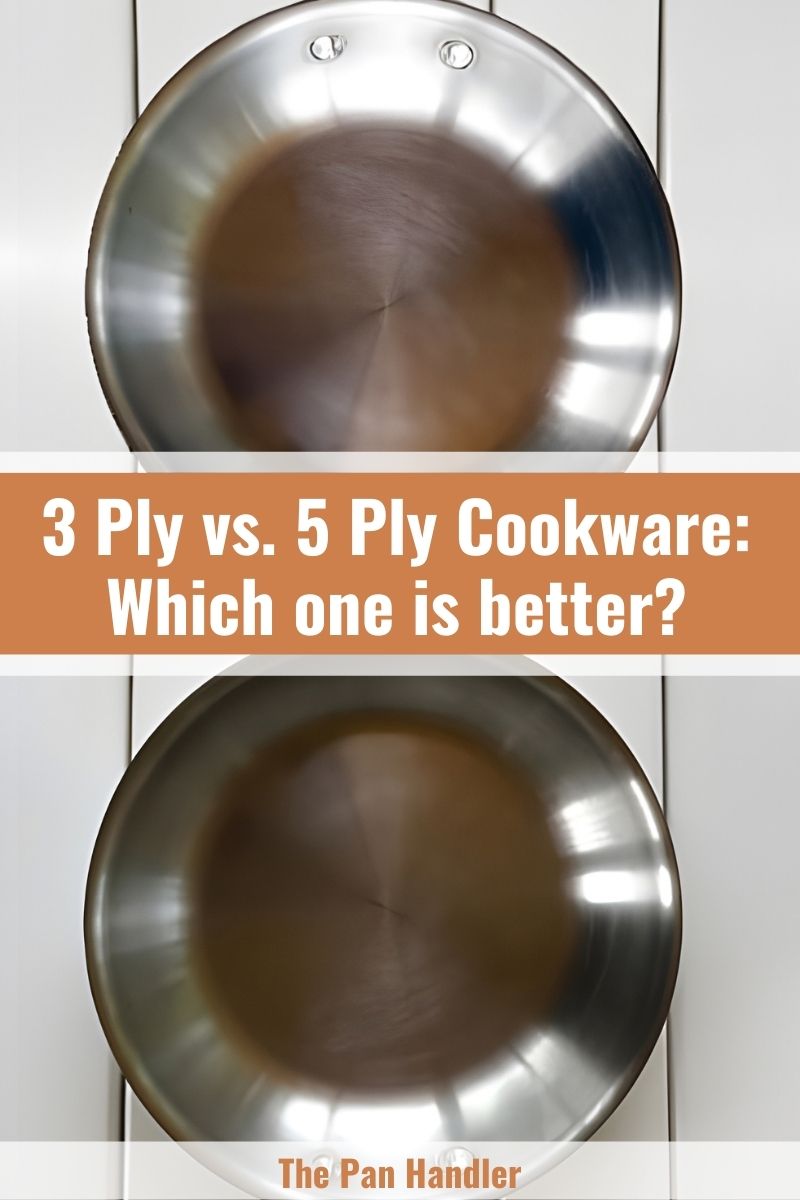
Most people often overlook the number of ply layers in cookware. However, it plays a massive role in how you cook and how much time it takes. Find out more about the difference between the 3-ply vs. 5-ply cookware in this article.
| 3 Ply vs. 5 Ply Cookware Overview | ||
| Feature | 3 Ply Cookware | 5 Ply Cookware |
| Layer | 3 layers of metal | 5 layers of metal |
| Core Material | stainless steel, aluminum | stainless steel, copper, aluminum |
| Heat Distribution | Good | Excellent |
| Durability | Generally durable | More durable |
| Versatility | Compatible with different heat sources like ovens or induction stoves | High versatility, can withstand hot temperatures |
| Weight | Lighter than 5 ply, easier to handle | Thicker and heavier, offering more stability |
| Price Point | More affordable | More expensive |
| Best For | Everyday cooking needs | Professional or intensive cooking |
What is a Ply, and Why is it important?
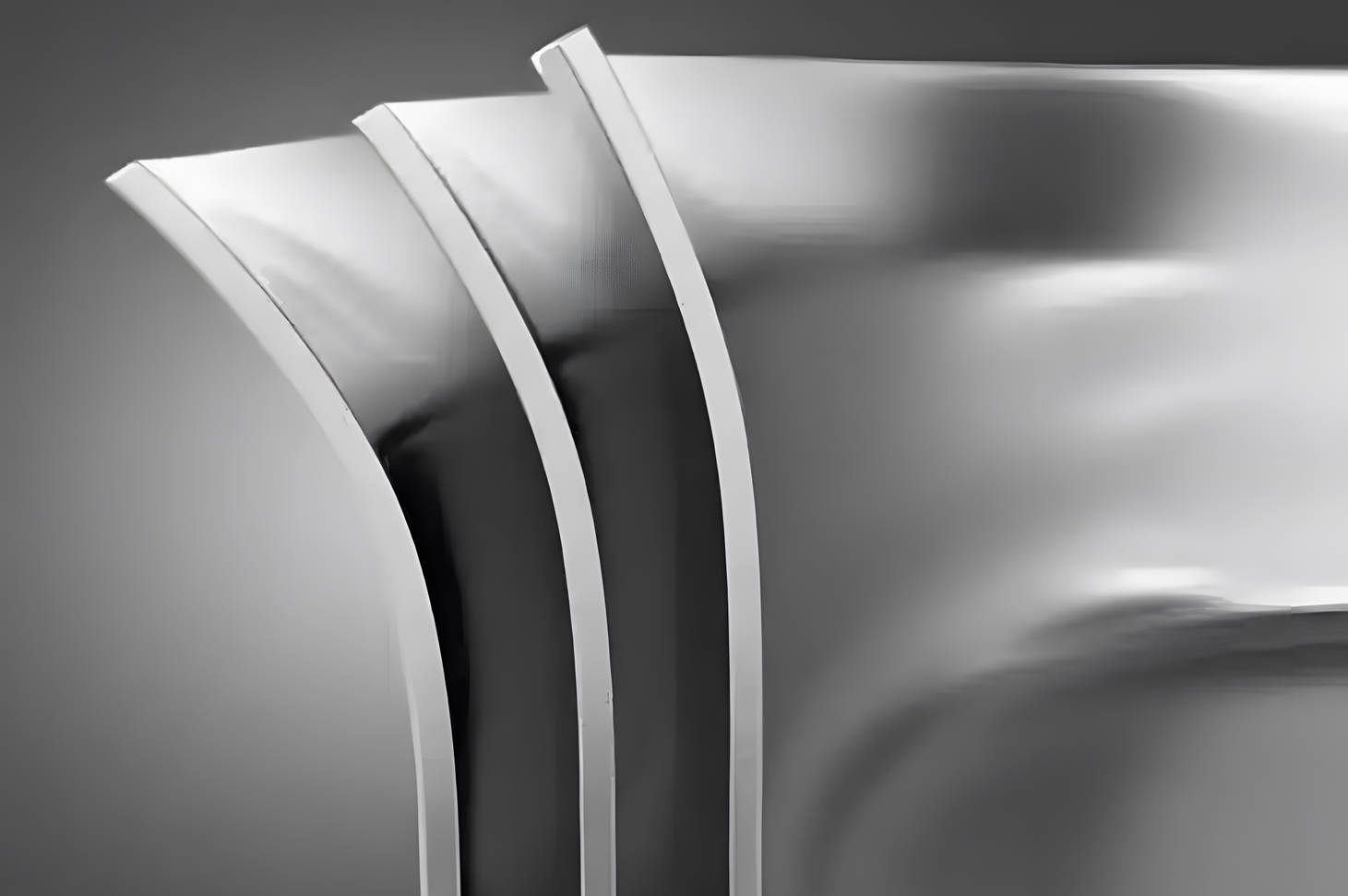
When finding the best cookware to buy, we sometimes stumble upon the word ply. However, if you have been researching pans and pots for some time, you might already be familiar with what ply is and why it is essential in cookware.
Here is an in-depth explanation of what a ply is and its significance for beginners.
Simply put, a ply is a layer that makes up the construction of a pot or pan. Some pans only have ply on the bottom part, while most of them cover the entire surface.
Technically, if a pan is categorized as 5 ply cookware, it consists of five metal layers. But that doesn’t necessarily equate automatically that the higher the number, the better its quality.
The ply determines how thick or thin a pan is, but how does that affect your cooking? If you have a 3-ply pan but with thick pieces of metal, that’s also the same as having 5-ply cookware with thin metal layers.
The thicker the pan, the better. But it would be best if you also considered that most 5-ply pans could distribute heat better than any 3-ply cookware.
What is Cladding?

The process done to create layers on cookware is called cladding. In this technique, different metals are bonded together chemically to make sure that they create the best quality cookware possible.
Common materials used in cookware cladding include copper, aluminum, and stainless steel. These metals are excellent heat conductors, making them ideal for cookware.
The process of cladding is very beneficial for any cookware since it will help improve the heat distribution of a pot or pan and make it even.
However, cookware made with only one type of metal may have certain limitations in its performance.
With stainless steel cookware, there can be heat spots that make it harder to distribute heat evenly.
On the other hand, aluminum cookware can wear off more quickly and, under certain conditions, may interact with certain foods. The same goes for other cookware that is only made out of copper.
While some metals are great conductors of heat, they may not perform as effectively when used solely as the surface material of cookware.
It would be best to find something durable and functional in the best ways possible while staying under a specific budget.
Cladding can help you with all that, better heat distribution, can respond to quick temperature changes, and can last you a very long time.
What is a 3 Ply Cookware?
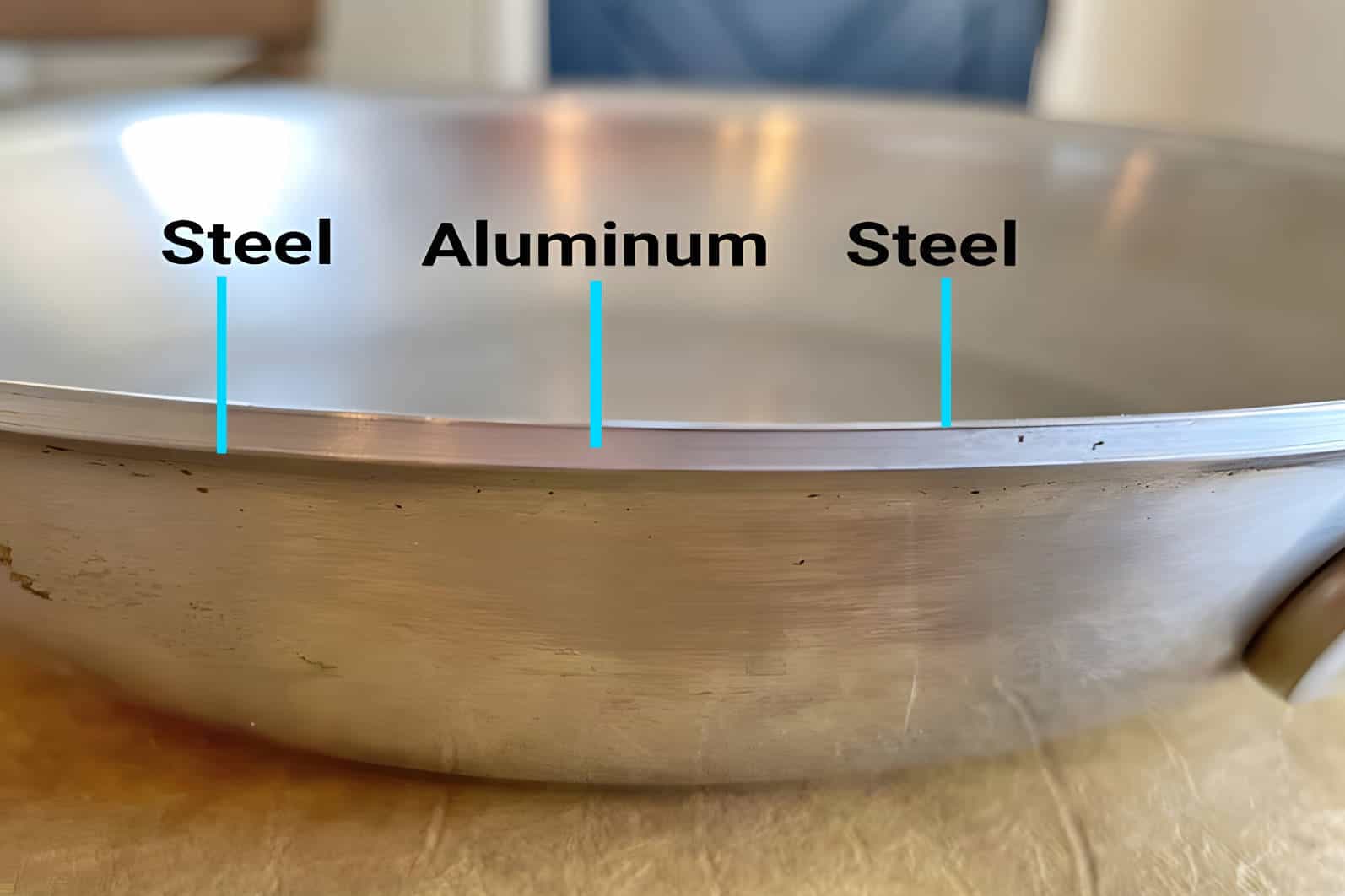
As the name suggests, 3 Ply Cookware refers to pots or pans made from three metal layers. It is mainly made out of two outer layers of stainless steel and a core made from either copper or aluminum.
These metals are fused to create more durable and long-lasting cookware. In addition, when clad together, these metals can provide you with excellent heat distribution for better cooking.
3 ply cookware is more widespread than 5 ply ones since they have been around and tested longer.
As the years pass, more and more developments are done with this type of pan that’s why now, you can use a 3 ply cookware for any heat source such as ovens or induction stovetops.
The only problem with this cookware is that it is generally lighter than 5 ply pans, so you may lose control quickly and spill your food. Sometimes, they may be costly, too, depending on the brand.
What is a 5 Ply Cookware?
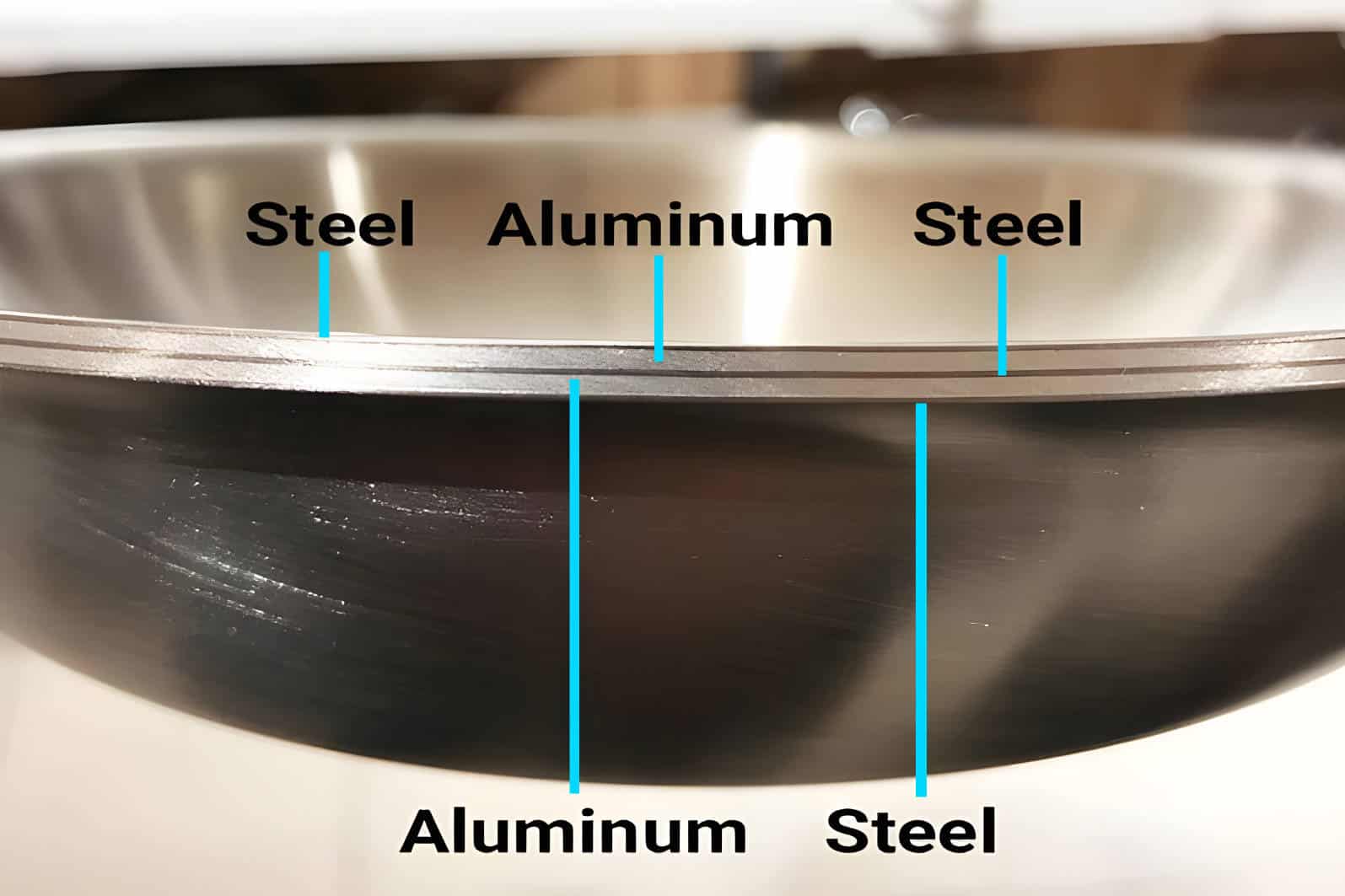
A 5 Ply Cookware is any pot or pan made of 5 layers of metals. Most of the time, the outer layers are made of stainless steel, while the core comprises three layers of conductors such as copper or aluminum.
This type of formation helps create a non-reactive surface for the pan while ensuring it can distribute heat evenly.
If you are wondering why you should choose a 5 ply cookware instead of a 3 ply cookware, the best reason is its thickness. While thickness may vary depending on a cookware’s brand, 5 ply pans are generally thicker than 3 ply ones.
They are also more versatile compared to some other types of pans due to their ability to withstand higher temperatures. In addition, it’s easy to cook on and easy to clean, which is a big plus for any kitchen cookware.
What are their Differences?
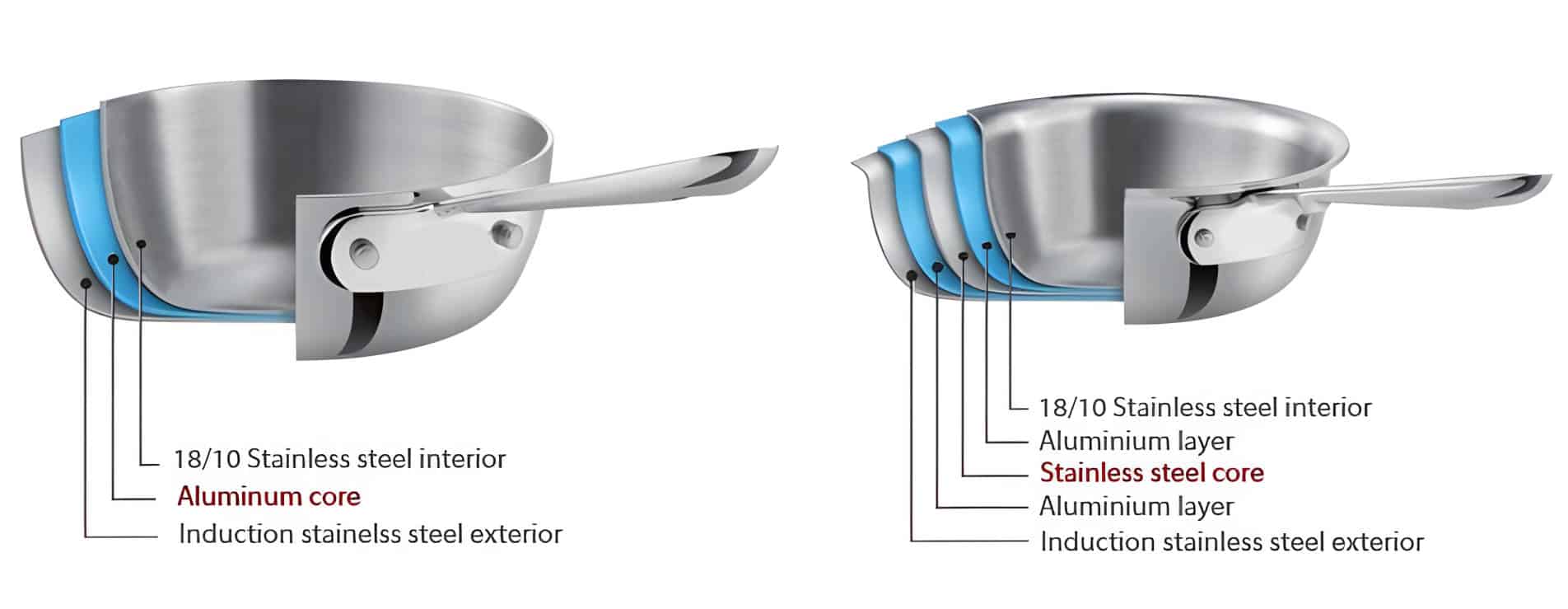
By this point, you already know what 3 ply cookware and 5 ply cookware are. In this section, we will elaborate further on their differences and provide insights to help you determine which type may be better suited for your needs.
Durability
One of the main differences between a 5 ply cookware and a 3 ply cookware is durability. However, this is dependent on a specific brand of cookware that you may want to try.
Certainly, it’s important to recognize that the number of layers in cookware alone doesn’t necessarily determine its durability. While 5-ply cookware typically has more layers in its core, not all layers are equal, and thickness can vary. However, it’s worth noting that, as a general rule of thumb, 5-ply cookware does tend to be more durable than 3-ply cookware in most cases.
With that said, if the cookware is thick, even if it has only three layers, it can last you for a long time, more so than others.
Pricing
If we talk about price points, it’s understandable that a 5 ply cookware is more expensive than a 3 ply one.
This is because 5 ply cookware has two extra layers and is generally made of more expensive materials compared to 3 ply cookware. These two layers help spread the heat evenly throughout the pan and retain heat.
If you want durable cookware that can work efficiently, go for a 5 ply cookware with more layers than the regular 3 ply cookware.
But if you are okay with buying a pan that works as well but with a cheaper price tag, consider getting a 3 ply cookware so you can save money while being able to do whatever you want on your stovetop.
Other factors to consider when buying cookware
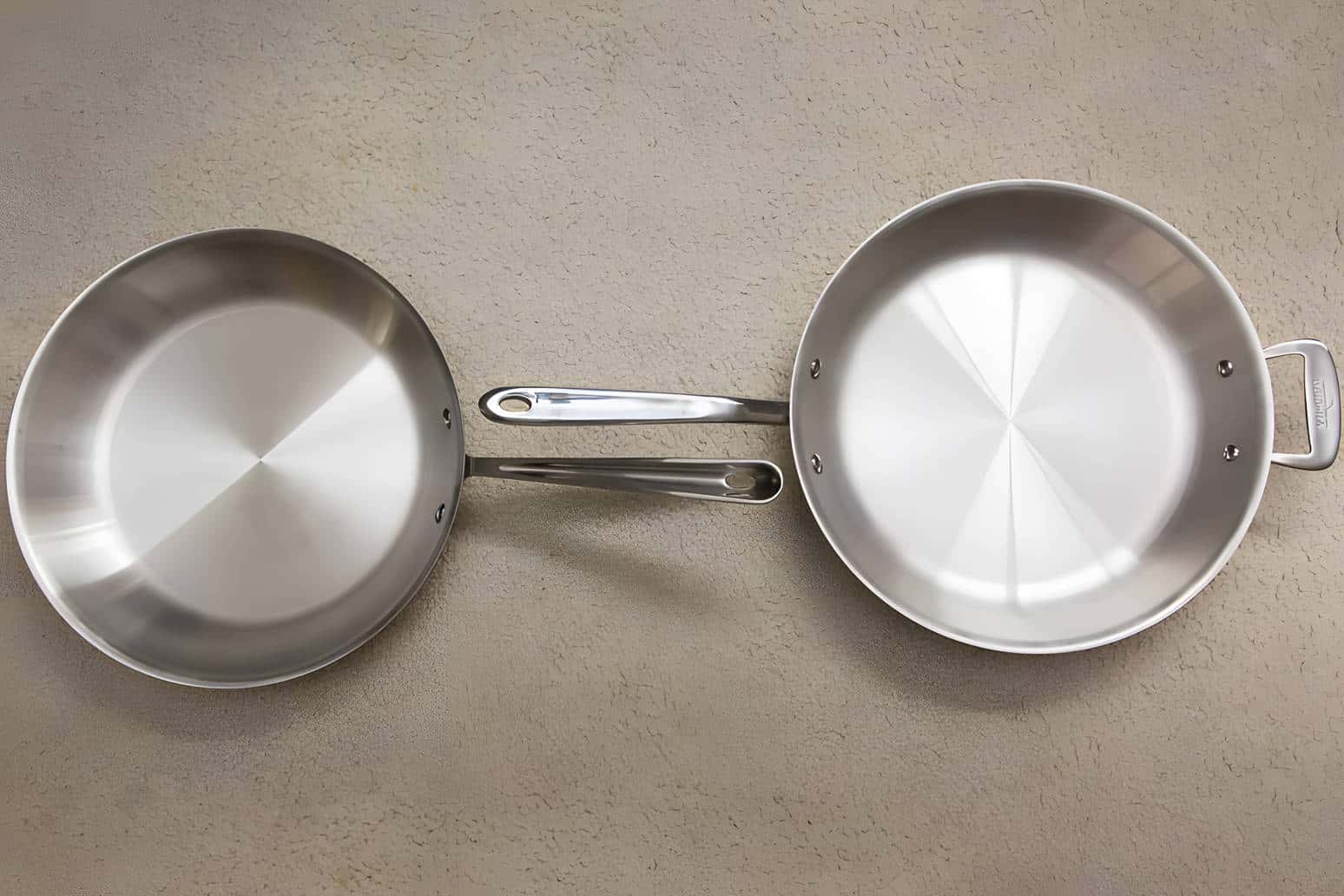
In buying pots and pans for your kitchen, it’s important to think hard and long for them since you’ll be using them daily. To help you achieve a decision, here are some factors to consider when buying cookware.
Quality and Materials
If you browse through some cookware, you’ll notice that they are made from different materials. You need to consider what kind of material you want your cookware to be made of since they have their advantages and disadvantages.
The most common materials used to make cookware are stainless steel, copper, non-stick, and cast iron. Stainless steel is hands down the most durable out of all the materials, while non-stick is the most advantageous.
| Common Cookware Materials | ||
| Material | Advantages | Disadvantages |
| Stainless Steel | Corrosion-resistant, Easy to clean | Poor heat conductivity |
| Cast Iron | Excellent heat retention, Durable | Heavy, Requires seasoning |
| Aluminum | Lightweight, Excellent heat conductivity | Prone to corrosion, Can scratch easily |
| Copper | Excellent heat conductivity | Prone to oxidation, Higher cost |
| Nonstick Coating | Nonstick properties, Easy to clean | Limited durability, Prone to scratching |
| Carbon Steel | Lightweight, Excellent heat conductivity | Requires seasoning, Prone to rust |
| Ceramic | Non-reactive, Easy to clean | Poor heat retention, Fragile |
Size
Considering how much you cook for your family and the number of people you cook for is significant in choosing the right cookware. If you only cook for yourself or a plus one, there is no need to get large pots and pans since it can cost you a lot. However, if you have a family of more than 4 people, invest in hefty cookware.
Price
Wherever you go and buy something, always consider your budget. Ensure that you are getting the best quality offered in the market for your price range. Do not settle for anything less to save a lot of money.
Heat
Finding good cookware that conducts heat easily can be confusing at first. You need to consider two things in this part: insulation and conduction. Most pans and pots are made with aluminum core since it does well in both; however, if you like cooking acidic foods, the aluminum may wear off and mix with it.
Buy other cookware but make sure that they have copper or stainless steel cores because these two are great conductors of heat.
Summary
Now that you know the difference between the 3 plies vs. 5 ply cookware, you can easily consider which one is the best cookware design to use for your everyday cooking. In addition, this particular knowledge will help you find the best pots and pans available on the market.


Michael Johnson is the founder of Pan Mastery, Inspired by his blacksmith grandfather’s legacy has a deep appreciation for hand-crafted pots and pans, he provides invaluable guides, reviews, and recipes to enhance your culinary journey.

